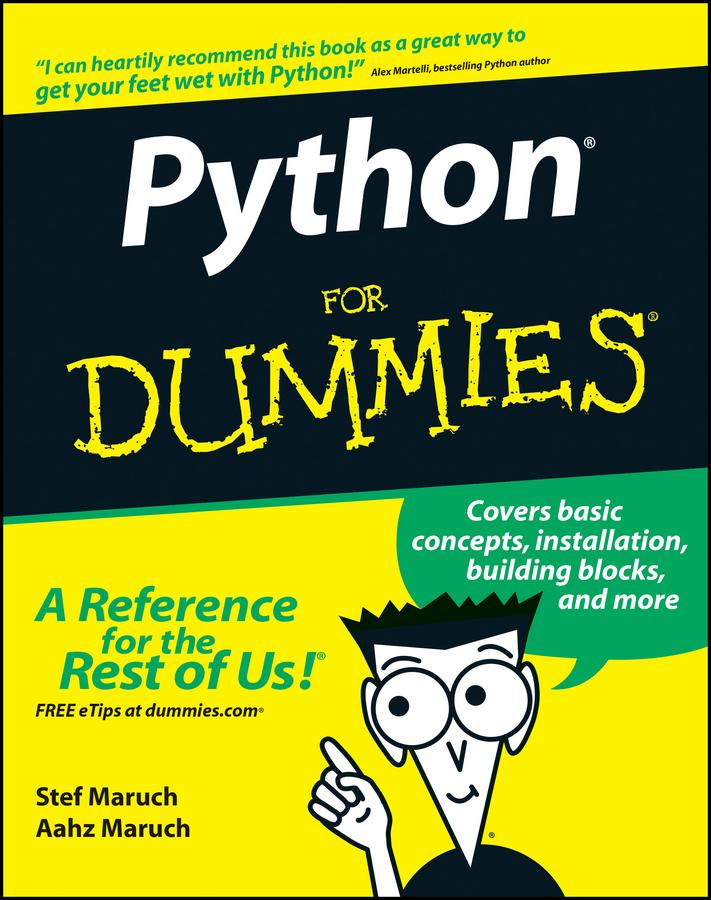
Zustellung: Di, 16.09. - Mo, 22.09.
Versand in 3-4 Wochen
VersandkostenfreiUse Python to build programs, debug code, and simplify development
Wrap yourself up in the structures, libraries, and advanced features of Python
Looking for a powerful yet easy-to-read programming language? Then slither up to Python! This friendly reference introduces you to Python, the portable, interactive language that combines great power with clear syntax. Get familiar with Python's building blocks; work with strings, dictionaries, and sets; and find out everything you need to write a robust program.
Discover how to
* Process lists and tuples
* Direct a program with control structures
* Build applications with modules and packages
* Get a charge from the "batteries included" libraries
* Understand the new features of Python 2. 5, including SQLite
Wrap yourself up in the structures, libraries, and advanced features of Python
Looking for a powerful yet easy-to-read programming language? Then slither up to Python! This friendly reference introduces you to Python, the portable, interactive language that combines great power with clear syntax. Get familiar with Python's building blocks; work with strings, dictionaries, and sets; and find out everything you need to write a robust program.
Discover how to
* Process lists and tuples
* Direct a program with control structures
* Build applications with modules and packages
* Get a charge from the "batteries included" libraries
* Understand the new features of Python 2. 5, including SQLite
Inhaltsverzeichnis
Introduction.
Part I: Getting Started.
Chapter 1: Introducing Python.
Chapter 2: Getting Your Hands on the Keyboard: Using Help, Interactive Mode, and IDLE.
Chapter 3: Basic Elements and Syntax.
Chapter 4: Grand Tour of the Python Language.
Chapter 5: Working Like a Programmer.
Part II: Building Blocks.
Chapter 6: So This String Walks into a Bar.
Chapter 7: Counting Your Way to Fun and Profit.
Chapter 8: Processing Lists and Tuples.
Chapter 9: Diving into Dictionaries.
Part III: Structures.
Chapter 10: Staying in Control.
Chapter 11: Fun with Functions.
Chapter 12: Building Applications with Modules and Packages.
Chapter 13: Getting Classy.
Chapter 14: Introducing New-Style Classes.
Chapter 15: Feeling Exceptional.
Chapter 16: Tackling Some Advanced Features.
Part IV: Libraries.
Chapter 17: Using Python's Primary Services.
Chapter 18: Processing Text.
Chapter 19: Digging into Disk Data.
Chapter 20: Accessing the Internet.
Part V: The Part of Tens.
Chapter 21: Ten Critical Python Idioms.
Chapter 22: Ten Great Resources.
Part VI: Appendixes.
Appendix A: Getting and Installing Python.
Appendix B: Python Version Differences.
Index.
Part I: Getting Started.
Chapter 1: Introducing Python.
Chapter 2: Getting Your Hands on the Keyboard: Using Help, Interactive Mode, and IDLE.
Chapter 3: Basic Elements and Syntax.
Chapter 4: Grand Tour of the Python Language.
Chapter 5: Working Like a Programmer.
Part II: Building Blocks.
Chapter 6: So This String Walks into a Bar.
Chapter 7: Counting Your Way to Fun and Profit.
Chapter 8: Processing Lists and Tuples.
Chapter 9: Diving into Dictionaries.
Part III: Structures.
Chapter 10: Staying in Control.
Chapter 11: Fun with Functions.
Chapter 12: Building Applications with Modules and Packages.
Chapter 13: Getting Classy.
Chapter 14: Introducing New-Style Classes.
Chapter 15: Feeling Exceptional.
Chapter 16: Tackling Some Advanced Features.
Part IV: Libraries.
Chapter 17: Using Python's Primary Services.
Chapter 18: Processing Text.
Chapter 19: Digging into Disk Data.
Chapter 20: Accessing the Internet.
Part V: The Part of Tens.
Chapter 21: Ten Critical Python Idioms.
Chapter 22: Ten Great Resources.
Part VI: Appendixes.
Appendix A: Getting and Installing Python.
Appendix B: Python Version Differences.
Index.
Mehr aus dieser Reihe
Produktdetails
Erscheinungsdatum
29. August 2006
Sprache
englisch
Untertitel
1. Auflage.
Sprache: Englisch.
Auflage
1. Auflage
Seitenanzahl
434
Reihe
... für Dummies
Autor/Autorin
Aahz Maruch, Stef Maruch
Verlag/Hersteller
Produktart
kartoniert
Gewicht
575 g
Größe (L/B/H)
235/187/24 mm
ISBN
9780471778646
Entdecken Sie mehr
Bewertungen
0 Bewertungen
Es wurden noch keine Bewertungen abgegeben. Schreiben Sie die erste Bewertung zu "Python For Dummies" und helfen Sie damit anderen bei der Kaufentscheidung.
































